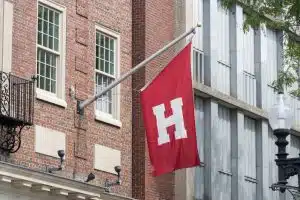Northwestern University Acceptance Rate: Admissions Statistics
Northwestern University, a renowned institution in the United States, stands out for its competitive admissions and vibrant campus life. This article provides a snapshot of its prestigious status, focusing on the critical aspect of the Northwestern University acceptance rate—a key factor for prospective students aiming to be part of its dynamic community.
What is Northwestern University’s Acceptance Rate?
What is Northwestern University’s acceptance rate? In the latest admissions cycle, the Northwestern University acceptance rate stood at a notably competitive 7.2%, maintaining the same rate as the previous year for the Class of 2026.
This figure came into focus with the university receiving an unprecedented 52,233 applications for its undergraduate programs, setting a new record for the number of hopeful students vying for a spot in the Class of 2027.
The consistent low acceptance rate at Northwestern mirrors a broader trend seen across many elite universities nationwide, where admissions have become increasingly selective. This trend reflects the growing appeal of top-tier institutions and the escalating competitiveness in the higher education landscape.
The Northwestern University’s 7.2% acceptance rate is a clear indicator of its prestigious standing and the high caliber of students it attracts. It also underscores the university’s rigorous selection process, which is aimed at identifying applicants who not only excel academically but also bring diverse perspectives and talents to the campus community.
The steady acceptance rate, despite the surge in applications, highlights the university’s commitment to maintaining a high standard of educational excellence and selectivity. For prospective students, this statistic is a crucial consideration, underscoring the importance of a well-prepared application to stand out in an increasingly competitive pool.
Northwestern University Early Action and Early Decision Acceptance Rates
Northwestern University offers an Early Decision (ED) application option. The university typically admits around half of its incoming freshman class from the ED round, with an estimated ED acceptance rate of 20% for the Class of 2027.
Here are the estimated rates for Early Decision (ED) acceptance rate for Northwestern University for the last 5 years as follows:
| Class | ED |
| 2028 | no data |
| 2027 | 20% |
| 2026 | no data |
| 2025 | no data |
| 2024 | no data |
Trends in Northwestern University’s Acceptance Rates
The historical trajectory of Northwestern University’s acceptance rates reveals a significant and steady trend towards increased selectivity over the past decade.
| Class of | Total Applications Received | Northwestern University Acceptance Rate |
| 2027 | 52,233 | 7.20% |
| 2026 | 51,558 | 7.20% |
| 2025 | 47,636 | 7.00% |
| 2024 | 39,263 | 9.30% |
| 2023 | 40,585 | 9.10% |
| 2022 | 40,425 | 8.50% |
| 2021 | 37,259 | 9.20% |
| 2020 | 35,107 | 10.70% |
| 2019 | 32,106 | 13.00% |
| 2018 | 33,674 | 13.10% |
This change is vividly illustrated when comparing the acceptance rates from the Class of 2018, which stood at 13.1%, to the markedly lower rate of 7.2% for both the Classes of 2026 and 2027. This decline in acceptance rates over the years is not just a reflection of Northwestern’s growing prestige but also indicates a broader shift in the higher education sector towards greater competitiveness.
Several key factors have influenced this trend. Firstly, there has been a steady increase in the total number of applications received — from 33,674 applications for the Class of 2018 to an unprecedented 52,233 for the Class of 2027. This surge in applications can be attributed to Northwestern’s rising reputation, its successful outreach efforts, and the general trend of students applying to more colleges.
Additionally, advancements in technology and the increasing accessibility of application processes have contributed to this influx. Furthermore, Northwestern’s commitment to holistic admissions processes and its emphasis on diverse and well-rounded student cohorts have made it a more attractive destination, thereby increasing competition.
The slight fluctuations observed — such as the increase from 9.1% for the Class of 2023 to 9.3% for the Class of 2024 — are often the result of varying strategic priorities and yearly differences in the applicant pool. However, the overarching trend clearly leans towards a lower acceptance rate, underscoring Northwestern University’s position as one of the most sought-after and selective institutions in the nation.
Northwestern University Admissions Statistics
Northwestern University, recognized for its high academic standards and reputation, recently received a record 52,233 applications for its incoming first-year class. This high number of applications highlights its popularity among high school students.
Despite the large pool of applicants, the Northwestern University acceptance rate remains highly competitive at 7.2%, indicating its status as one of the most selective universities in the U.S.
Out of the massive number of applicants, only 2,112 students were admitted to the first-year class. This selectivity shows Northwestern’s focus on admitting students who not only excel academically but also fit well with the university’s community and values.
It’s noteworthy that about half of these admitted students got in through the Early Decision process, which suggests that applying early and showing a strong interest in Northwestern can be beneficial for applicants. This trend points to the importance of not just good grades and test scores, but also a genuine interest in being a part of Northwestern’s community.
Northwestern Demographics
Northwestern University prides itself on a diverse and inclusive student body, reflecting a global spectrum of backgrounds and experiences. This diversity is integral to the admissions process, ensuring a rich educational environment where multiple perspectives thrive.
The university’s commitment to inclusion extends to supporting first-generation college students and Pell Grant recipients, emphasizing accessibility and opportunity in higher education.
Ethnic Diversity
- Asian American/Pacific Islander: 29.3%
- Black/African American: 14.2%
- Hispanic/Latinx: 17.2%
- White: 47.8%
- Native/Indigenous: 2%
- International: 10.5%
It’s important to note that Northwestern’s reporting method accounts for students who identify with multiple races/ethnicities, leading to percentages that exceed 100%.
Other Key Highlights of Diversity and Inclusivity
- Black, Indigenous, or People of Color (BIPOC) Representation: 57.4%
- First-Generation College Students: 14.6%
- Pell Grant Recipients: 20.7%
- Global Diversity: Northwestern’s undergraduate community is profoundly international, with over 8,000 students hailing from more than 100 countries and utilizing over 60 languages, showcasing the university’s global appeal and multicultural campus life.
This Northwestern University admissions statistics underscore the institution’s commitment to fostering a diverse, inclusive, and academically exceptional community. Aspiring Wildcats can expect to be part of a vibrant student body that not only excels academically but also brings a wealth of diverse perspectives to the campus.
SAT/ACT Scores for Northwestern Admits
Northwestern University adopted a test-optional policy in 2020 in line with its commitment to a holistic admissions process. This policy, which remains in effect for students applying for fall 2024, reflects a shift in the university’s approach to evaluating applicants.
While standardized test scores like the SAT and ACT were once a significant component of the admissions process, Northwestern’s test-optional stance means that submitting these scores is no longer mandatory for applicants.
This change in policy aligns with the university’s emphasis on evaluating students based on a broader spectrum of achievements and potential. However, for those interested in historical data, the last posted SAT/ACT scores for Northwestern admits for the Class of 2024 provide insight into the caliber of admitted students at the university.
- SAT (Combined Critical Reading and Math) Middle 50%: 1460-1540
- ACT Composite Middle 50%: 33-35
These figures, while no longer a required part of the application, do highlight the academic excellence of Northwestern’s student body.
Moreover, more than 95% of the admits for the Class of 2027 were in the top 10 percent of their graduating high school class, underscoring the university’s focus on academic achievement beyond standardized testing.
While Northwestern University’s shift to a test-optional policy reflects a broader change in the landscape of college admissions, the institution continues to attract and admit students who demonstrate exceptional academic prowess and potential. This policy allows for a more inclusive and holistic review of applicants, ensuring that a diverse array of talents and backgrounds is represented in its student body.
What Northwestern University Looks For
Navigating the intricate process of college admissions, especially at a prestigious institution like Northwestern University, often steers the conversation toward the concept of ‘fit.’ This term, frequently mentioned by high school counselors and Northwestern’s admissions officers, encapsulates a complex and personalized idea.
‘Fit’ at Northwestern is not a one-size-fits-all criterion; it varies significantly from one prospective student to another, reflecting the university’s commitment to understanding and valuing the unique backgrounds, aspirations, and potential of each applicant.
Firstly, ‘fit’ at Northwestern transcends mere academic achievements or present skills. It’s about recognizing and nurturing the future potential of each student. This perspective emphasizes the evolution of an individual, focusing on their journey of growth and their future contributions.
Additionally, ‘fit’ involves the alignment of a student’s strengths with the unique offerings of the university. It’s not about attaining perfection but about finding a harmonious match where a student’s abilities and aspirations resonate with Northwestern’s environment and opportunities.
Moreover, Northwestern understands the dynamic nature of ‘fit.’ As students grow and their viewpoints evolve, so does their sense of fit with the university. It’s a concept that adapts and grows with them.
Northwestern University has provided a set of guiding questions designed to help prospective students reflect on their compatibility with the institution. These questions are a reflection of the key considerations taken during the application review process.
Academic Growth and Intellectual Curiosity
- Exploration of Interests: What subjects ignite your enthusiasm? What kind of inquiries propel you?
- Initiative in Learning: How have you pursued knowledge beyond the classroom?
- Challenging Yourself: In what ways have you pushed your boundaries or surprised yourself academically?
Involvement and Community
- Community Roles: What impacts have you made in your communities, and how have they shaped you?
- Meaningful Involvement: Which activities have been most significant to you and why?
- Integration into Northwestern’s Community: How do you see yourself contributing to and benefiting from Northwestern’s environment?
Personal Characteristics
- Self-Reflection: What aspects of yourself are you most proud of?
- Social Dynamics: What kind of friendships do you aspire to build in college, and what kind of friend do you aim to be?
- Resilience and Joy: How do you navigate challenges and disagreements? What brings you happiness?
Northwestern University seeks students who not only excel academically but also show a deep sense of self-awareness, community involvement, and personal growth. The holistic review process is designed to evaluate these aspects comprehensively, considering each applicant’s unique story and potential to thrive in Northwestern’s dynamic environment.
In conclusion, what Northwestern University looks for goes beyond academic scores and extracurricular achievements. It’s about how your personal journey aligns with the university’s ethos, how your aspirations resonate with its opportunities, and, most importantly, how you see yourself evolving within this vibrant community.
How Hard Is It to Get Into Northwestern?
Gaining admission to Northwestern University stands as a notably competitive endeavor in the realm of higher education. This is particularly evident when considering the institution’s prestigious ranking in the 2024 edition of US News & World Report’s Best Colleges in the US, where Northwestern is ranked at an impressive #9.
This high ranking reflects not only the university’s academic excellence and desirability among prospective students, contributing to a highly selective admission process.
Compared to other top-tier universities, Northwestern’s admission rate of 7.20% is indicative of its competitive nature. For context, this rate is more accessible than some of its close peers in the rankings, yet still denotes a highly selective process.
So, how hard is it to get into Northwestern? The competitive nature of its admissions process becomes even more apparent when comparing Northwestern’s admission rate to those of similar, highly selective institutions.
For instance, Brown University, also ranked at #9, has an acceptance rate of 5.20%, only slightly more selective than Northwestern’s. Similarly, Duke University ranked at #7 and admitted 6.30% of its applicants, showcasing a comparable level of selectivity.
These figures highlight the exclusivity and prestige associated with these top-ranked institutions. Prospective students aiming for these elite institutions must present exceptional academic records and extracurricular achievements, along with compelling personal narratives, to stand out in such a highly selective admissions landscape.
The close similarities in acceptance rates among these top-ranked universities underscore the challenge faced by applicants and the high standards upheld in the admissions processes of these esteemed institutions.
Northwestern University Application Requirements
Applying to Northwestern University requires careful attention to detail and thorough preparation. Alongside academic achievements, the application also rigorously evaluates personal essays, recommendation letters, and extracurricular activities, ensuring a comprehensive understanding of each candidate’s unique character and potential contributions to the Northwestern community.
Here’s an overview of the specific application requirements that prospective students need to fulfill:
- Application Platforms: Applicants must use either the Common Application or the Coalition Application with Scoir.
- Northwestern Supplement: This is a mandatory component for all applicants using the Common Application or Coalition with Scoir. The supplement requires a response of 300 words or fewer. For those applying through QuestBridge, this supplement is optional.
- Writing Supplements: Though optional, Northwestern encourages applicants to respond to at least one and no more than two additional writing prompts. Each response should be fewer than 200 words. This offers a valuable opportunity to showcase more about your personality and interests.
- Academic Records: This document provides a comprehensive view of your academic performance throughout high school.
- School Report and Counselor Recommendation: The school report, along with a recommendation from a school counselor, gives insight into your academic potential and character from the perspective of those who have guided your educational journey.
- Teacher Recommendation: Northwestern requires at least one recommendation from a teacher, preferably from a core subject area, during your junior or senior year. This recommendation should highlight your academic abilities and classroom engagement.
- Early Decision Agreement: A required document for Early Decision applicants
- Proof of English Proficiency: For students whose primary language isn’t English or who haven’t been educated in English, providing proof of English language proficiency is crucial. Accepted tests include the Duolingo English Test (DET), IELTS (including IELTS Indicator), and TOEFL iBT (including the Special Home Edition, but excluding TOEFL ITP Plus for China Solution).
- Application Fee: A non-refundable application fee of $75 is required, although fee waivers are available for those who qualify.
Supplemental Materials
For students applying to certain specialized programs at Northwestern University, there are additional materials and applications to consider. These supplements are vital for those interested in specific programs and these materials often have earlier deadlines than the general application for admission.
1. Bienen School of Music
Applicants must submit a Bienen School Supplement in addition to the undergraduate application.
Supplement materials include:
- Music prescreening and/or portfolio materials.
- A required music teacher recommendation letter, submitted via the Bienen School Supplement.
2. Integrated Science Program (ISP)
Those aspiring to join the Integrated Science Program need to fill out a separate ISP application online, in addition to the general Northwestern application.
ISP application considerations:
- A strong background in mathematics and science, including calculus, chemistry, and physics (AP courses recommended).
- Completion of one-variable differential and integral calculus before enrolling in ISP, or an outline on how to comply with the requirement if not already done in high school.
3. Mathematical Methods in the Social Sciences (MMSS)
Applicants to MMSS must also complete an MMSS-specific application online.
MMSS application considerations:
- A rigorous high school curriculum, including a year of calculus.
4. School of Communication – Music Theatre Certificate Program
Applicants to the Theatre Major in the School of Communication who are interested in the Music Theatre Certificate Program should consider submitting an optional Music Theatre Supplement. This is not required for Bienen School of Music Voice Majors, who must audition for the program after their first quarter.
Supplement materials for Music Theatre include:
- A personal statement video answering specific questions about contributions to music theatre and the role of a liberal arts education in achieving music theatre goals.
- Two contrasting musical selections for performance.
- Optional supporting materials, such as a monologue, dance, or instrumental skills video.
By fulfilling these requirements, applicants can ensure that their application to Northwestern University is complete and ready for evaluation. The application process at Northwestern is designed to holistically assess each candidate, so taking the time to thoughtfully complete each component is vital for a strong application.
Northwestern University’s Interview Process
Northwestern University offers an optional component in its admissions process through alumni interviews. These interviews are not a mandatory part of the application, and choosing not to participate will not adversely affect an applicant’s chances of admission.
Availability of these interviews is contingent on the presence and capacity of alumni volunteers in the applicant’s region. As these interviews are conducted by members of the Alumni Admission Council (AAC), their availability varies based on alumni distribution, availability, and willingness to volunteer.
The Role of Alumni Interviews in Admissions Decisions
Alumni interviews at Northwestern are primarily informational and offer a platform for applicants to inquire about the university and showcase their fit and interest. The feedback from alumni interviews provides the admissions committee with additional context about the applicant beyond the written application.
However, it’s crucial to note that not having an interview does not place the applicant at a disadvantage. The university emphasizes that the decision to offer interviews is based solely on alumni resources and not on the strength of an applicant’s submission.
Interview Format and Scheduling
For the 2023–24 academic year, Northwestern has implemented a hybrid format for interviews. While the default mode is virtual, applicants can express their preference for an in-person meeting. The university assures equal weight to both virtual and in-person interviews in the admissions process.
Applicants from regions with active alumni interviewers will receive instructions via email on how to request an interview. It’s important for applicants to add the admissions office’s email to their contacts to avoid missing these communications.
Interview Expectations and Logistics
Applicants who opt for an interview should expect a conversational interaction where they can express themselves freely and ask questions. There’s no requirement for additional documents or preparation materials. In cases where technology access is a concern, applicants are encouraged to communicate with their interviewers or contact the university for assistance.
Alternatives for Applicants Unable to Secure an Interview
Northwestern understands that not all applicants will have the opportunity for an interview due to geographical or capacity limitations. The university reassures that this will not impact the evaluation of an application.
Applicants are encouraged to engage with Northwestern through virtual tours, the university’s YouTube channel, and direct communication with the admissions office for further insights into the campus and community.
Special Provisions for International Applicants: InitialView Interviews
International students who are unable to participate in alumni interviews have the option of InitialView interviews. Like alumni interviews, these are not mandatory, and the lack of an interview does not disadvantage an applicant.
InitialView interviews provide an additional perspective on the applicant’s English language proficiency and personal characteristics, evaluated solely by the admissions committee.
This comprehensive overview of Northwestern University’s interview process offers prospective students clarity on how interviews are integrated into the admissions process, ensuring a well-informed and strategic approach to their application. While the interview is optional, it presents a valuable opportunity for applicants to personally connect with the Northwestern community and demonstrate their enthusiasm and suitability for the university.
Key Application Deadlines for Northwestern University
Navigating the application process requires meticulous attention to key application deadlines for Northwestern University, particularly for those opting for Early Decision (ED) and Regular Decision paths.
The Early Decision route, designed for students who are certain that Northwestern is their top choice, demands an application submission typically by early November. It’s crucial to note that this option is binding – meaning if you are accepted under ED, you are committed to enrolling at Northwestern.
This pathway is ideal for applicants who have made a definitive choice and are ready to demonstrate their dedication to the university.
For Early Decision Applicants
- Application deadline: November 1
- Financial aid application due: December 1
- Standardized test date: October 2023
- Bienen School Supplement: October 15
- InitialView interviews (International students): November 1
On the other hand, the Regular Decision option, with a deadline usually falling in early January, offers greater flexibility for students still considering their options. This extended time frame allows for a more thorough preparation of the application, providing an opportunity to enhance essays, secure strong recommendations, and update any test scores if necessary.
For Regular Decision Applicants
- Application deadline: January 3, 2024
- Financial aid application due: February 1, 2024
- Standardized test date: December 2023
- Bienen School Supplement: December 1
- InitialView interviews (International students): January 3, 2024
Decision Notification Dates
- Early Decision: Mid-December 2023
- Regular Decision: Late March 2024
Student Response Deadlines
- Early Decision: February 1, 2024
- Regular Decision: May 1, 2024
Both these deadlines are critical in the application timeline and require applicants to plan accordingly. In addition to these primary deadlines, it’s also important for students to stay aware of other key dates related to the application process, such as financial aid submission deadlines, scholarship considerations, and any specific program-related deadlines.
Adhering to these deadlines not only ensures a complete and timely application but also reflects an applicant’s organizational skills and serious intent in joining the Northwestern community.
Tuition Costs at Northwestern for 2023-2024
Alongside academic and admission considerations, it’s important for students and their families to be well-informed about the tuition fees, available financial aid options, and the overall financial commitment involved in attending Northwestern.
Here is a breakdown of tuition costs at Northwestern for 2023-2024, featuring three distinct living expense scenarios.
| Living On-Campus | Living in an Off-Campus Apartment | Living with Relatives & Commuting | |
| Direct Costs | |||
| Full-Time Tuition | $64,887 | $64,887 | $64,887 |
| Fees | $1,110 | $1,110 | $1,110 |
| On-Campus Housing/Meals | $20,334 | $0 | $0 |
| Estimated Indirect Costs | |||
| Off-Campus Housing/Meals | $0 | $20,334 | $3,255 |
| Books & Supplies | $1,686 | $1,686 | $1,686 |
| Personal Expenses | $1,905 | $1,905 | $1,905 |
| Transportation | $1,314 | $1,314 | $945 |
| Loan Fees | $54 | $54 | $54 |
| Total | $91,290 | $91,290 | $73,842 |
Northwestern University’s cost of attendance covers more than just academic fees. It includes housing, based on the average cost of an on-campus double room, which is applicable to off-campus housing, and an unlimited meal plan.
Book and supply costs are averaged, considering new and used materials. Personal expenses like clothing and entertainment are estimated based on standard costs but will vary by student. Moreover, transportation costs, comprising travel expenses to and from the campus, are included in the overall financial planning.
Additionally, for families considering federal student loans to cover part of their contribution, loan fees are incorporated into the budget.
Lastly, students who plan to enroll in the Northwestern student health insurance plan should account for an additional cost of $5,144. This comprehensive view of the tuition and associated costs is designed to aid students and families in making informed financial decisions for their academic tenure at Northwestern.
Northwestern University Scholarships
At Northwestern University, financial aid, and scholarship opportunities are robust, designed to meet 100% of the demonstrated financial need for all admitted students, including international students, through loan-free packages. In the 2022-23 academic year, over $200 million was awarded to undergraduates, with about half receiving a Northwestern University Scholarship.
Scholarships are financial awards granted to students, often based on criteria such as special talents, interests, or other qualifications, helping to ease the cost of education. It’s important to note that at Northwestern University, scholarships are not awarded based on academic merit, but rather focus on other aspects such as demonstrated financial need and unique student attributes or situations.
Northwestern University Scholarship
This scholarship is a key component of Northwestern’s commitment to meet 100% of the demonstrated financial need for all admitted students. It’s typically the final part of an aid package, filling in any remaining financial gaps after other aid forms are applied. Eligibility is based on demonstrated institutional financial need and funding availability, catering to students from diverse income backgrounds.
Northwestern Endowed Scholarships
These are special scholarships established by individuals, often alumni, who support Northwestern’s mission. Students receiving need-based Northwestern Scholarships may qualify for these endowed scholarships, which often foster connections between students and their benefactors.
Good Neighbor, Great University Scholarship
Targeted at students graduating from high schools in Evanston and Chicago, this scholarship aims to strengthen community ties. It uniquely replaces the student’s summer earnings expectation and work-study allocation in their financial aid package.
Native American and Indigenous Studies Scholarship
Introduced for the 2023-24 academic year, this scholarship supports undergraduates focusing on Native American and Indigenous studies. It’s awarded based on a demonstrated commitment to enhancing knowledge and awareness of Native American and Indigenous issues.
Outside Scholarships
These scholarships are sourced from entities outside of federal, state, and institutional programs. Northwestern adjusts its financial aid packages to accommodate these scholarships, ensuring compliance with federal regulations and maintaining its commitment to meeting students’ full demonstrated financial needs.
Students seeking scholarships can greatly benefit from free search services like FastWeb and Scholarships.com, which offer comprehensive databases to easily find financial aid opportunities aligned with their needs and goals.
Through these diverse scholarship options, Northwestern University demonstrates its dedication to providing accessible, comprehensive financial aid to its students, underlining its role as an institution committed to educational excellence and inclusivity.
Popular Majors at Northwestern University
Northwestern University is renowned for a range of majors that cater to diverse interests and career aspirations. Among the most sought-after majors are those in the fields of Journalism, Economics, and Engineering, each distinguished by a unique blend of rigorous academic training and practical, real-world applications.
The Medill School of Journalism is particularly notable, often ranked among the top journalism schools in the country, offering students unparalleled opportunities in media and communications.
Economics at Northwestern is another standout, drawing students with its strong theoretical foundations and applications in policy and global economics.
Moreover, Engineering majors, from mechanical to chemical engineering, are celebrated for their innovative curriculum and research opportunities, preparing students for cutting-edge roles in various industries.
In addition to these established programs, Northwestern is also home to emerging and unique academic offerings. One such program is the interdisciplinary study in Integrated Science, which combines mathematics, physics, chemistry, and biology, offering a holistic approach to scientific education that is rare in traditional academic settings.
Similarly, the Global Health Studies program has been gaining traction, reflecting the university’s commitment to addressing global health challenges through a multidisciplinary lens.
These programs are indicative of Northwestern’s dedication to evolving its academic offerings in response to the changing educational and professional landscape, ensuring that its students are well-equipped for the challenges and opportunities of the modern world.
At Northwestern University, students can explore a diverse range of majors, each offering a unique blend of academic rigor and practical relevance.
From the highly acclaimed Journalism and Communication programs to cutting-edge Engineering and Computer Science disciplines, Northwestern ensures a dynamic and comprehensive educational experience. These popular majors not only reflect the university’s commitment to excellence but also cater to the evolving interests and career aspirations of its student body, preparing them for success in a rapidly changing world.
Student Life at Northwestern
Student life at Northwestern extends well beyond academics, offering a vibrant and diverse experience. First-year students are initially housed in one of 26 unique campus residences, including residence halls, residential colleges, and special-interest housing such as fraternities and sororities.
These options, available throughout their university journey, are more than just accommodation; they are communities within themselves, each with a unique set of features, services, and staff.
The university encourages students to engage with their wider community, fostering connections through shared meals and various programs. Living amenities such as internet, cable TV, housekeeping, 24/7 maintenance and staff support, free laundry services, mail, and vending ensure a comfortable and convenient residential life.
Complementing this is Northwestern’s commitment to inclusive dining. The university offers various culinary choices across its four residential dining commons and numerous retail locations on campus.
The focus is on fresh, carefully prepared foods, catering to various dietary needs, including vegetarian, vegan, Kosher, and Halal options. Special attention is given to allergen-free meals at the Pure Eats stations, ensuring everyone feels included and valued.
Beyond residential life, Northwestern’s student experience is enriched by a diverse array of clubs, cultural events, and wellness resources, catering to a wide range of interests and promoting a holistic university experience. These elements combine to create a vibrant, supportive community where personal growth and engagement are as valued as academic success.
Academics at Northwestern
Northwestern University’s competitive admissions are mirrored in its low acceptance rate, emphasizing the university’s commitment to maintaining high academic standards and a dynamic, student-focused environment. This approach is further enhanced by exceptional teaching quality and small class sizes, fostering a rich educational experience.
With a student-to-faculty ratio of 6:1 and 80% of classes hosting fewer than 20 students, the university fosters a personalized learning experience. Moreover, students can choose from over 190 majors, minors, certificates, and concentrations across six undergraduate schools, ensuring a wide array of academic pathways.
Northwestern also stands out as a leading research university, home to over 90 school-based centers and 35 university research centers, with a strong emphasis on interdisciplinary research in areas like neuroscience, nanotechnology, biotechnology, and drug discovery. Opportunities for cutting-edge research collaboration with faculty are abundant, enhancing the academic experience.
Additionally, specialized advising and resources are readily available for those interested in law and medical careers.
Reflecting its global perspective, over half of Northwestern students engage in international experiences, with about one-third participating in traditional study abroad programs, underscoring the university’s commitment to preparing students for a connected and globalized world.
With its low student-to-faculty ratio, diverse range of programs, and emphasis on research and interdisciplinary studies, Northwestern not only educates but also prepares students for leadership in various fields. The university’s commitment to global perspectives and experiential learning further ensures that its graduates are well-equipped to succeed and innovate in a rapidly evolving world.
Extracurriculars at Northwestern
At Northwestern University, students have many opportunities to engage and excel beyond academics, thanks to its nearly 500 clubs and organizations. These extracurricular activities not only enhance campus life but also contribute significantly to personal and professional development. Here’s a snapshot of the diverse range of activities available:
Academics
- Neuro Club: A hub for students keen on various neuroscience fields.
- Association of Undergraduate Women in Science: Supports women and underrepresented genders in science fields.
- Personal Finance Student Association: Helps students in effective personal financial management.
- Students for Ecological and Environmental Development (SEED): Advocates for environmental concerns through education and action.
- Undergraduate Chemistry Council: Open to all majors interested in chemistry.
Performing Arts
- Afrothunda Dance Troupe: Promotes African culture through dance.
- Boomshaka: A premier drum, dance, and rhythm ensemble.
- Fusion Dance Company: A collegiate dance company showcasing diverse dance forms.
- Purple Crayon Players: Focuses on theatre for young audiences and community service.
- AMASE (Academy of Music and Arts for Special Education): Offers music and art education for children with disabilities.
Media & Journalism
- Northwestern Undergraduate Research Journal: Publishes undergraduate research across disciplines.
- STITCH: A fashion-focused publication.
- The Daily Northwestern: An award-winning college newspaper.
- WNUR Student Radio: A non-commercial, listener-supported radio station.
- Northwestern News Network: The campus’s sole broadcast news station.
Fraternities & Sororities
- Alpha Phi Omega: Emphasizes leadership, friendship, and service.
- Sigma Alpha Iota: A music fraternity for women and nonbinary students.
- Delta Sigma Pi: A co-ed business fraternity focusing on professional development.
- Alpha Psi Lambda National, Inc.: Aims to support Latino students.
- Phi Alpha Delta: A coed professional law fraternity with a pre-law program.
Athletics
Northwestern University, a distinguished Big Ten conference member, offers a comprehensive athletic program encompassing 19 varsity sports, alongside a vibrant array of intramural and club sports.
The university’s athletic prowess is evident through its recent successes: the football team has secured two Big Ten West titles since 2018 and four bowl games since 2016, while the 2021 NCAA field hockey championship highlights their dominance in the sport.
Northwestern’s women’s lacrosse team has been particularly formidable, claiming seven NCAA titles since 2005. The university also boasts recent conference championships across various sports, including basketball, soccer, softball, golf, tennis, wrestling, fencing, swimming, and diving.
This vibrant collection of extracurriculars at Northwestern University reflects its commitment to fostering a well-rounded educational experience
Participation in these activities enhances crucial skills such as teamwork, leadership, and time management, while also offering avenues for personal growth, networking, and career development. Engaging in these diverse clubs and sports not only complements academic pursuits but also helps in building a supportive and vibrant community, shaping students into versatile and engaged global citizens.
Student Well-being at Northwestern
Student well-being at Northwestern is a multifaceted journey, intertwining various dimensions of wellness to enhance students’ overall quality of life and support their long-term health. This holistic approach encompasses eight interconnected dimensions: physical, emotional, social, intellectual, environmental, spiritual, vocational, and financial wellness.
To address physical wellness, the Health Service in Evanston offers comprehensive health care services. For emotional well-being, Counseling & Psychological Services (CAPS) and the Center for Awareness, Response & Education (CARE) provide support, alongside TimelyCare’s free virtual mental health resources. Social wellness is fostered through initiatives like NU Nights, promoting engaging, substance-free activities.
Intellectual growth is supported by diverse academic resources, including the Global Learning Office for study abroad opportunities. The university’s commitment to environmental wellness is evident through sustainNU, a program aiming to engage the entire university community in efforts to reduce and eventually eliminate Northwestern’s impact on climate change.
Spiritual needs are catered to through various religious centers and student organizations, alongside resources like Drop-In Meditation. Vocational wellness is a priority, with Northwestern Career Advancement and Health Professions Advising offering career guidance.
Lastly, financial wellness is addressed through Financial Wellness and Student Enrichment Services, aiding students in managing their finances effectively.
Through these resources, Northwestern University demonstrates its commitment to nurturing all aspects of student wellness, understanding that it’s an ongoing process vital for personal development and academic success.
Northwestern’s Notable Alumni
Northwestern University boasts a distinguished array of alumni who have significantly impacted various sectors, further elevating the university’s global prestige. Here’s a look at some of these notable alumni, categorized by their fields of expertise.
Politics and Public Service
- Claudia Lopez: Influential Mayor of Bogotá, Colombia.
- J.B. Pritzker: Governor of Illinois and noted philanthropist.
- Rubén Castillo: Distinguished as the first Hispanic Chief Judge of the U.S. District Court for the Northern District of Illinois.
Business and Innovation
- Patrick G. Ryan: Founder of Aon Corporation, a leading global professional services firm.
- Gwynne Shotwell: Influential President and COO of SpaceX, pivotal in space technology advancements.
- Andrew Youn: Co-founder of One Acre Fund, aiding smallholder farmers in Africa.
Journalism and Communication
- Roxana Saberi: An esteemed journalist and author known for her work with BBC, NPR, and Al Jazeera.
- Craig Sager: Renowned sports reporter known for his work with TNT and CBS and his distinctive style.
- Brent Musburger: A legendary sportscaster known for his long career in broadcasting, including work with ESPN and ABC.
Entertainment and Media
- Stephen Colbert: Celebrated comedian and host of “The Late Show.”
- Meghan Markle: Actress, known for her role in “Suits,” and Duchess of Sussex.
- George R.R. Martin: Author of the “A Song of Ice and Fire” series, which inspired the TV series “Game of Thrones.”
These alumni represent a fraction of Northwestern’s impressive alumni network. Their diverse achievements across various sectors reflect the university’s commitment to nurturing excellence and leadership. Each alumnus’s journey and contributions highlight Northwestern’s role in shaping influential personalities and leaders who leave enduring marks in their respective domains.
Northwestern University offers a diverse and comprehensive range of programs that appeal to a wide array of interests and career goals. Its competitive acceptance rate reflects the university’s dedication to cultivating a community enriched with innovative thinkers and leaders.
Renowned for its distinguished faculty and an impressive roster of alumni, Northwestern has consistently played a pivotal role in empowering the next generation of influential individuals.
For prospective students seeking an environment that combines rigorous academics with a vibrant campus life and extensive supportive resources, Northwestern University emerges as an ideal choice. It promises a transformative educational journey, equipping students with the skills and experiences necessary to excel in their future endeavors.
AdmissionSight, with its expertise in college admissions, plays a crucial role in helping students navigate the competitive landscape of Northwestern’s admissions process. Understanding the low acceptance rate at Northwestern University, our expert team focuses on enhancing the unique strengths of each student, ensuring their applications stand out.
Our team aids students in enhancing their applications to Northwestern University by offering personalized guidance on showcasing academic and extracurricular strengths, along with specialized preparation for crucial interviews and essays.
AdmissionSight’s comprehensive approach, combining individualized attention and strategic guidance, significantly boosts students’ chances of gaining admission to Northwestern University amidst its highly selective admissions process.








































